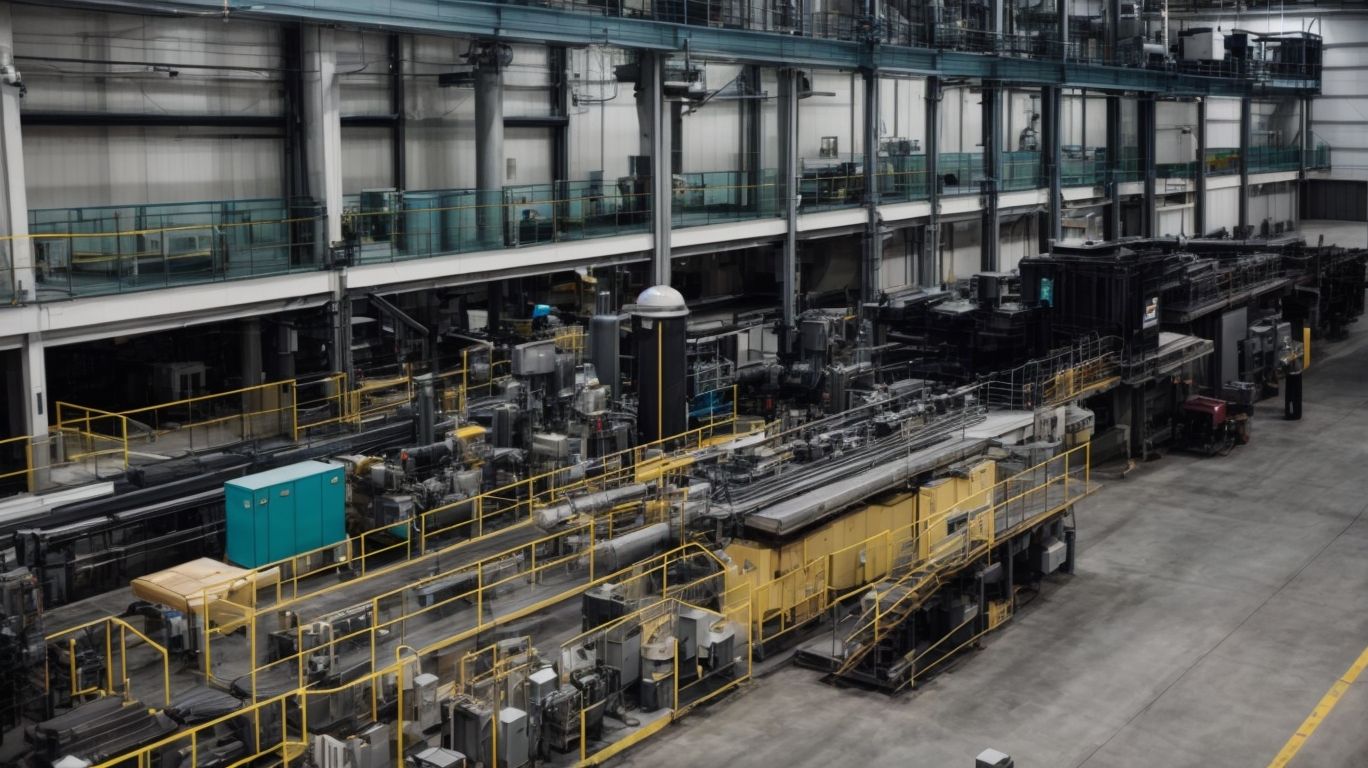
Risk Reduction and Cost Savings: The Advantages of Retrofitting
Retrofitting is a crucial process that involves updating and modifying existing buildings to make them more efficient, sustainable, and safe. This article will delve into the importance of retrofitting and the benefits it offers.
We will explore the different types of buildings that can be retrofitted, the steps involved in the retrofitting process, and the various types of retrofitting, including energy, seismic, fire safety, and water efficiency retrofitting. We will discuss the costs and long-term savings associated with retrofitting, providing insights into the return on investment. If you are interested in risk reduction and cost savings through retrofitting, this article is a must-read.
What Is Retrofitting?
Retrofitting refers to the process of making enhancements or improvements to existing buildings, infrastructure, or systems to enhance energy efficiency, sustainability, and overall performance.
This process plays a significant role in building construction. It enables older structures to meet modern energy efficiency standards and environmental regulations.
By incorporating energy-efficient upgrades such as insulation, high-efficiency lighting, and HVAC system improvements, buildings can reduce their environmental impact and operating costs.
Retrofitting contributes to the overall enhancement of building infrastructure. It ensures that structures are equipped with updated technology and sustainable features to meet the demands of the contemporary built environment.
Why Is Retrofitting Important?
Retrofitting holds significant importance due to its ability to align buildings with modern standards, enhance safety, reduce environmental impact, and achieve substantial financial benefits through improved building performance.
Retrofitting plays a vital role in ensuring compliance with building codes and regulations. These standards are constantly evolving to meet advanced engineering standards.
By leveraging modern technology, retrofitting enables buildings to meet environmental goals. This includes improving energy efficiency and reducing carbon emissions, contributing to a more sustainable future.
Safety enhancements achieved through retrofitting not only protect occupants, but also mitigate potential risks. This is essential for any structure.
The financial benefits of improved building performance, such as lower operating costs and increased property value, make retrofitting a strategic investment for building owners and communities.
What Are The Benefits Of Retrofitting?
The benefits of retrofitting encompass significant advantages such as reduced energy consumption, lower operational costs, diverse upgrade options, enhanced risk assessment, streamlined project planning, adherence to building standards, and effective retrofit strategies.
Retrofitting offers numerous benefits in optimizing building performance and sustainability. By updating systems and equipment, it reduces energy consumption, leading to significant cost savings. The use of advanced technologies and materials also improves risk assessment and strengthens the building’s resilience.
Efficient project planning is made possible through retrofitting, resulting in timely completion and cost-effective implementation. Adhering to building standards not only ensures regulatory compliance but also increases the property’s overall value and marketability.
What Types Of Buildings Can Be Retrofitted?
Various types of buildings, including residential, commercial, and industrial structures, can undergo retrofitting to enhance property value, achieve energy savings, and deliver a favorable return on investment.
This process is especially beneficial for commercial buildings, where energy efficiency improvements can significantly reduce operational costs and attract environmentally-conscious tenants. Retrofitting industrial structures can also lead to substantial energy savings and provide a competitive edge in the market.
Residential properties can experience increased market value and appeal to potential buyers seeking environmentally-friendly homes. Retrofitting offers a versatile solution for enhancing the financial and environmental performance of diverse building types.
Residential Buildings
Retrofit solutions for residential buildings focus on enhancing the building envelope, implementing performance improvements, and integrating energy-efficient improvements to elevate overall building energy efficiency.
Tailored solutions for residential buildings typically involve the installation of high-performance insulation materials, upgrading windows and doors for improved air sealing, and implementing energy-efficient heating and cooling systems.
Advancements in smart building technologies and energy management systems are also essential in optimizing energy consumption and overall performance. By addressing these specific areas, residential buildings can significantly reduce energy waste, lower utility costs, and enhance occupant comfort and well-being.
Commercial Buildings
Retrofitting commercial buildings involves meticulous retrofit design, strategic equipment upgrades, effective energy management, compliance with energy codes, and the optimization of building infrastructure.
This process demands careful planning to ensure that the retrofit design not only enhances energy efficiency but also considers the specific needs of the building’s infrastructure.
Upgrading equipment such as HVAC systems, lighting, and insulation is essential to maximize energy savings. Energy management strategies, such as implementing smart controls and monitoring systems, play a crucial role in maintaining optimal energy usage.
Compliance with energy codes ensures that the retrofit meets the required standards for energy efficiency and environmental sustainability.
Industrial Buildings
Retrofitting industrial buildings involves optimizing energy performance, deploying specialized retrofit technologies, conducting comprehensive building assessments, and enhancing overall building systems to improve energy performance.
This typically involves upgrading HVAC systems, optimizing insulation, implementing energy-efficient lighting, and integrating renewable energy sources.
Comprehensive building assessments help identify key areas for improvement, while the integration of advanced technologies such as smart building management systems and automated energy controls can further enhance energy performance.
By prioritizing these strategies, industrial buildings can achieve significant energy savings and contribute to a more sustainable built environment.
What Are The Steps Involved In Retrofitting?
Retrofitting encompasses several key steps, including thorough building assessment, precise design and planning, efficient implementation, continuous monitoring and maintenance, comprehensive project management, energy audits, building maintenance, and energy conservation.
Once the building assessment is completed, the design and planning phase focuses on integrating energy-efficient solutions and sustainable practices.
Implementation involves the actual execution of the retrofitting measures, ensuring compliance with energy codes and standards. Continuous monitoring and maintenance play a crucial role in ensuring the long-term effectiveness of the retrofit, with regular energy audits and building maintenance programs helping to track and optimize energy consumption.
Comprehensive project management ensures that all aspects of the retrofit are carefully coordinated and executed to achieve the desired energy conservation goals.
Building Assessment
The initial phase of retrofitting involves comprehensive building assessment. This includes risk assessment, evaluation of energy usage, preparation for retrofit implementation, and the identification of cost-effective solutions.
This phase is crucial in determining the structural integrity of the building. It also involves assessing potential hazards and vulnerabilities, and understanding the current energy consumption patterns. This sets the foundation for devising an effective retrofit implementation plan tailored to the specific needs of the building.
The assessment helps in identifying areas for improving energy efficiency and sustainability. This leads to the implementation of cost-effective solutions that align with the overall goals of the retrofit project.
Design And Planning
The subsequent phase involves meticulous design and planning, incorporating the retrofitting process, adherence to building standards, formulation of effective retrofit strategies, and the integration of energy-saving solutions and energy-efficient upgrades.
This careful planning is crucial for maximizing the potential energy-saving benefits of retrofits. It involves evaluating the current energy usage and identifying areas for improvement.
Implementing energy-efficient upgrades, such as LED lighting, smart HVAC systems, and insulation improvements, can significantly reduce energy consumption. Strategic retrofit strategies aim to optimize building performance, reduce operating costs, and minimize environmental impact. This alignment between design, planning, and energy-efficient solutions is essential for achieving sustainable and impactful retrofit projects.
Implementation
The implementation phase focuses on executing the planned retrofit measures, integrating building retrofit programs, leveraging energy-efficient technology, conducting comprehensive building energy analysis, and deploying cutting-edge building energy-saving technologies.
This phase involves a systematic approach to implement the identified energy-efficient technologies, considering factors such as building design, occupancy patterns, and operational requirements.
Building retrofit programs are instrumental in facilitating the seamless execution of retrofit measures, ensuring that the latest energy-saving technologies are effectively incorporated. The comprehensive building energy analysis plays a crucial role in identifying and prioritizing areas where energy-saving interventions can yield the greatest impact, thereby maximizing the overall energy efficiency of the building.
Monitoring And Maintenance
The final phase involves continuous monitoring and maintenance to ensure the sustainability of energy-efficient investments, track building energy upgrades, and optimize overall building energy performance.
By implementing regular monitoring and maintenance, building owners can effectively track the performance of energy-efficient systems and identify areas for improvement. This ongoing attention facilitates the long-term sustainability of the building’s energy efficiency, ultimately leading to reduced operational costs and a smaller environmental footprint.
Continuous monitoring allows for the detection of potential issues before they escalate, ensuring that the building maintains its optimal energy performance over time. This commitment to ongoing maintenance reinforces the importance of investing in energy-efficient upgrades and highlights the significant impact they can have on building sustainability and operational efficiency.
What Are The Types Of Retrofitting?
Retrofitting encompasses various specialized types, including energy retrofitting, seismic retrofitting, fire safety retrofitting, and water efficiency retrofitting, each tailored to address specific building requirements and challenges.
Energy retrofitting focuses on enhancing the energy efficiency of existing structures. This often involves upgrades to insulation, HVAC systems, and lighting to reduce energy consumption and operational costs.
Seismic retrofitting, on the other hand, aims to strengthen buildings against seismic activity by adding reinforcement elements to the structure.
Fire safety retrofitting involves measures to minimize fire hazards and improve evacuation routes to enhance the safety of occupants.
Water efficiency retrofitting focuses on integrating water-saving technologies and systems to reduce water usage and minimize environmental impact.
Energy Retrofitting
Energy retrofitting focuses on optimizing energy performance through the integration of advanced retrofit technologies, energy-efficient systems, and tailored retrofit solutions to enhance overall building energy efficiency.
This process aims to reduce energy consumption and improve the environmental sustainability of buildings by upgrading insulation, replacing outdated lighting systems with LED fixtures, installing energy-efficient heating and cooling systems, and implementing smart building management technologies.
Energy retrofitting also involves conducting energy audits to identify areas for improvement and the use of renewable energy sources such as solar panels. By focusing on energy performance optimization, energy retrofitting helps reduce operational costs and environmental impact, creating healthier and more sustainable built environments.
Seismic Retrofitting
Seismic retrofitting involves comprehensive building assessment, strategic infrastructure enhancements, and the implementation of retrofit strategies to mitigate seismic risks and enhance overall structural resilience.
This process begins with a thorough evaluation of the existing building’s structural integrity and vulnerability to seismic forces. Engineers and architects consider various factors such as the building’s age, construction materials, and local seismic hazards.
Once the assessment is completed, infrastructure improvements, such as strengthening foundations and reinforcing structural elements, are designed to enhance the building’s ability to withstand seismic events. Effective retrofit strategies, such as adding bracing systems or dampers, are implemented to further reduce seismic risk and improve the building’s overall resilience.
Fire Safety Retrofitting
Fire safety retrofitting entails adherence to building codes, integration of advanced safety technology, meticulous risk assessment, and precise retrofit design strategies to enhance overall fire safety measures within buildings.
To ensure fire safety, buildings must comply with building codes by using fire-resistant materials and providing adequate escape routes. Additionally, incorporating advanced safety technology, such as smoke detectors, fire alarms, and sprinkler systems, can further enhance fire prevention and containment. Conducting a thorough risk assessment can help identify potential fire hazards and determine the best retrofit solutions, while precise design strategies can optimize the building’s fire safety infrastructure for maximum effectiveness.
Water Efficiency Retrofitting
Water efficiency retrofitting focuses on water conservation measures, proactive building maintenance, infrastructure adjustments, and the reduction of environmental impact through targeted water efficiency initiatives.
To reduce water consumption and minimize environmental impact, buildings can implement various initiatives. These include installing water-saving fixtures like low-flow toilets and faucets, using smart irrigation systems, conducting regular leak detection and repairs, and optimizing landscape irrigation.
Retrofitting can also play a role in water conservation efforts. This may involve updating water distribution systems, utilizing greywater for non-potable purposes, and implementing rainwater harvesting systems to reduce reliance on municipal water sources. These measures can significantly decrease operational costs and reduce a building’s environmental footprint.
What Are The Costs And Savings Of Retrofitting?
The costs and savings related to retrofitting encompass initial investment considerations, long-term financial benefits, and the potential return on investment (ROI) resulting from strategic retrofitting initiatives.
Retrofitting may involve a significant initial investment, but the long-term financial benefits can be substantial. By upgrading to energy-efficient systems and implementing sustainable technologies, businesses can lower their operational costs and reduce their environmental impact.
This can lead to a positive ROI as the savings from reduced energy consumption and maintenance expenses surpass the initial retrofitting outlay. The concept of ROI highlights the financial gain that can be achieved through smart retrofitting decisions, positioning it as a sound financial investment.
Initial Costs
The initial costs of retrofitting involve capital investment considerations and comprehensive cost-benefit analysis to evaluate the financial feasibility and potential returns associated with retrofitting endeavors.
When it comes to retrofitting projects, businesses and organizations must carefully consider various factors. This includes the capital investment aspect, which involves expenses for equipment, materials, labor, and infrastructure modifications.
Additionally, conducting a comprehensive cost-benefit analysis is crucial. This analysis takes into account long-term advantages and disadvantages, such as energy savings, operational efficiencies, maintenance costs, and potential revenue streams. By evaluating these factors, decision-makers can determine if the initial costs of retrofitting are justified by the expected benefits, leading to successful project implementation.
Long-term Savings
Long-term savings resulting from retrofitting initiatives are driven by enhanced energy performance, optimized building operations, and the efficiency gains achieved through upgraded equipment and systems.
These factors work together to create a more sustainable and cost-effective building environment. By improving energy performance, buildings consume less energy, resulting in reduced utility costs and a lower environmental impact.
Optimization of building operations ensures that resources are used more efficiently, minimizing waste and maximizing productivity. Upgrading equipment and systems leads to improved performance, reduced maintenance costs, and lower energy consumption. This holistic approach not only saves money in the long run but also contributes to a greener and more efficient built environment, benefiting both the bottom line and the planet.
Return On Investment (ROI)
The concept of return on investment (ROI) in retrofitting revolves around effective project management, financial benefits derived from improved energy performance, and compliance with building codes, resulting in sustainable and impactful returns.
Project managers overseeing retrofitting initiatives have a crucial role in coordinating resources, timelines, and stakeholders to achieve efficient and cost-effective energy performance improvements. Adhering to building codes during retrofitting projects ensures safety, durability, and energy efficiency, resulting in long-term financial gains for property owners.
Compliance with energy performance standards not only promotes environmental sustainability but also leads to reduced operational costs and increased market value of properties.




No Comments